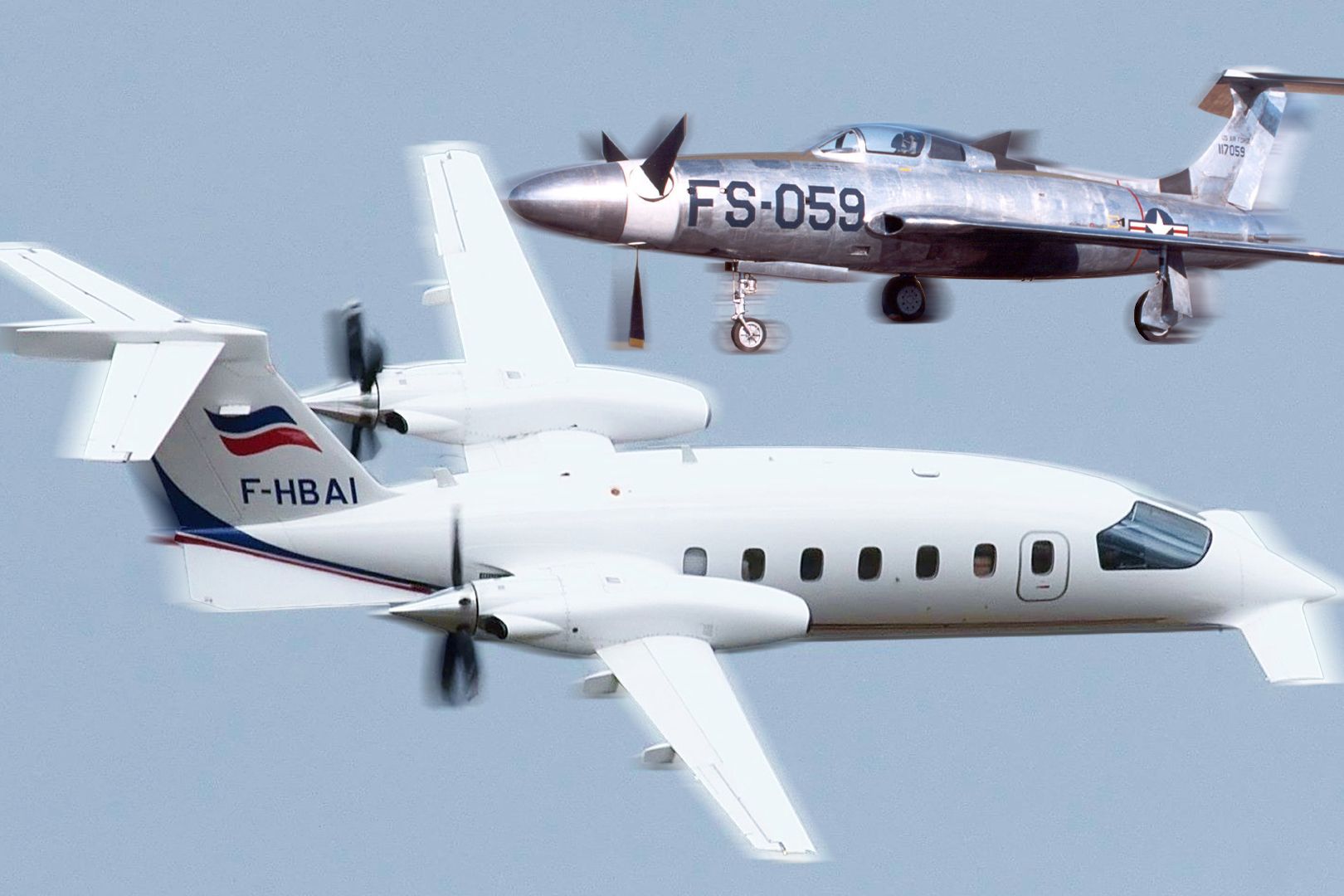Summary Propeller aircraft cannot achieve supersonic speeds due to design limitations of blades. Aerodynamic effects and excessive heat must be managed to reach supersonic flight. Noise levels and structural risks limit the use of propeller-driven aircraft at supersonic speeds.
All supersonic aircraft are jet (or rocket) propelled aircraft - but can a propeller-driven aircraft reach supersonic speeds? The short answer is no - at least no propeller (including turboprop) aircraft are designed to fly at supersonic speeds. Propeller aircraft are absent from all supersonic designs. While the retirement of the Concorde ended the age of commercial supersonic travel , aircraft in development like Boom's Overture are promising to bring back supersonic travel .

Jet aircraft did not fully replace propeller-driven aircraft, with numerous commercial passenger (normally short-haul) and military aircraft being turboprops, as propellers have some advantages over jet engines. Supersonic flight A supersonic flight is achieved when the aircraft's speed exceeds the speed of sound (768 miles per hour at sea level). To achieve supersonic speed, the airframe must withstand adverse aerodynamic effects due to the transonic aerodynamic effects of the transonic movement of air.
The aerodynamic drag significantly increases as the flow shifts from subsonic to supersonic. Additionally, the aircraft undergoes turbulence, excessive heat due to friction, and shockwaves. A supersonic flight is achieved after the aircraft breaks through this aerodynamic barrier, also known as the sound barrier.
The first time an aircraft exceeded the sound barriers was on October 14, 1947, with the experimental Bell X-1 research rocket plane. The first production plane to achieve supersonic flight was the F-86 Canadair Sabre. Supersonic passenger jets: Status: Cruise speed: Concorde: Retired: Mach 2.
0 Tu-144 (aka Concordski): Retired: Mach 2.02 Boeing 2707: Canceled: Mach 2.7 Lockheed L-2000: Canceled: Mach 2.
7-3.0 Boom Overture: In development: Mach 1.7 Spike S-512 Diploment: In development: Mach 1.
6 Today, the potential is seen in supersonic commercial passenger jets and the future of supersonic business jets . One example of a supersonic business jet under development is the Spike S-512 Diplomat , which would be able to fly around the world in half the time (cutting London-NYC travel time to 3.3 hours from 6.
2 hours). The majority of the fastest turboprops in the world are military aircraft. Turboprops enjoy advances at slower speeds Turboprops enjoy a number of advantages over their jet-powered counterparts, but these advantages are typically at lower (not higher) speeds.
Propellers give aircraft better takeoff and climb performance, shorter landings, and more options for steep descents and ground handling. Notable air speed record: Speed: Date: Wright Flyer (first flight): 6.82 mph 1902 Bell X-1 (first supersonic flight): 670 mph 1947 North American X-15 (hypersonic rocket plane): 4,520 mph (Mach 6.
7) 1967 Tu-144 Concordski (first supersonic passenger plane): over 767 mph 1969 For example, the Airbus A400M strategic airlifter and tanker is considered the fastest turbo-prop aircraft of its class. Airbus says , "Thanks to its powerful turboprops, the A400M can fly both at the low speeds and low altitudes to refuel slow receivers as well as at higher speeds and altitudes of about 300 knots and altitudes around 25,000 ft ." This enables the A400M to be the only tanker to refuel the full range of probe-equipped military aircraft at their preferred speeds.
Airframe and engine requirements The primary requirement for the supersonic airframe is to overcome the adverse supersonic effects. The aircraft structure must withstand the excessive heat generated as the air passes through the surface at high speeds. Wings must be wide enough to generate and maintain positive lift at low speeds.
The engines must generate enough power to fight the intense drag. So, can a high-speed propeller achieve that? In the 1940s, the predecessor to NASA - National Advisory Committee for Aeronautics (NACA) - conducted a comprehensive research program to achieve high-speed propellors. The structure, the wings, and the overall airframe design were tweaked several times to achieve a successful supersonic flight.
However, propeller blades pose a significant challenge due to their design. Fastest propeller aircraft today Max cruise speed: Airbus A400M 552 mph Piaggio P.180 Avanti 463 mph Lockheed Martin C-130J Super Hercules 416 mph De Havilland Canada Dash 8 Q400 414 mph To achieve supersonic flow, the propellor blades must be thin and sharp on the leading edges.
Moreover, they must be designed with the lowest camber and have a precise angularity. Despite the ideal design parameters, the speed variability on the surface remains a challenge. Parts of the blade would achieve supersonic flow before the entire blade, creating isolated pockets of sonic waves.
The pockets compromise the strength of the blade and result in blade damage. The uneven effects of transonic waves on blade surfaces are powerful enough to break the propellor. Making the propeller stiffer and heavier comes with its own challenges.
The aircraft has a fascinating history. Another aspect is that the noise levels of propeller-driven aircraft are higher than those of jets. NASA, Boom, Spike Aerospace, and others are working on reducing the noise of the supersonic boom.
But all of their designs are with jet aircraft and no such supersonic aircraft are envisioned as turboprops. At supersonic speeds, the noise levels are further amplified to risky levels. That poses a risk to the structural integrity of the aircraft.
According to NACA , "Even if the planes could handle the powerful shockwaves generated or push through transonic drag with enough thrust to maintain lift, the noise level alone seems prohibitive." What are your thoughts on the propeller's ability to achieve supersonic flight? Share your opinion in the comments section..



















